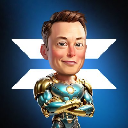-
 Bitcoin
Bitcoin $82,532.5653
-0.47% -
 Ethereum
Ethereum $1,824.2400
-0.22% -
 Tether USDt
Tether USDt $1.0002
0.04% -
 XRP
XRP $2.0891
-2.87% -
 BNB
BNB $598.7668
-1.02% -
 Solana
Solana $125.5207
0.59% -
 USDC
USDC $0.9999
-0.03% -
 Dogecoin
Dogecoin $0.1644
-3.47% -
 Cardano
Cardano $0.6468
-4.11% -
 TRON
TRON $0.2341
1.48% -
 Toncoin
Toncoin $3.9443
3.93% -
 Chainlink
Chainlink $13.3725
-2.17% -
 UNUS SED LEO
UNUS SED LEO $9.1022
-5.82% -
 Stellar
Stellar $0.2658
-0.94% -
 Avalanche
Avalanche $18.7494
-2.83% -
 Shiba Inu
Shiba Inu $0.0...01225
-3.10% -
 Sui
Sui $2.2404
-5.15% -
 Hedera
Hedera $0.1615
-5.38% -
 Polkadot
Polkadot $4.0239
-1.65% -
 Litecoin
Litecoin $82.5262
-3.94% -
 MANTRA
MANTRA $6.2971
-0.12% -
 Bitcoin Cash
Bitcoin Cash $300.5206
-2.01% -
 Dai
Dai $0.9999
-0.01% -
 Bitget Token
Bitget Token $4.4612
-3.72% -
 Ethena USDe
Ethena USDe $1.0000
0.00% -
 Pi
Pi $0.7041
-8.37% -
 Hyperliquid
Hyperliquid $12.6570
0.20% -
 Monero
Monero $216.6236
0.33% -
 Uniswap
Uniswap $5.9290
-0.81% -
 Aptos
Aptos $5.3023
0.05%
What does "token economics" of blockchain mean?
Token economics is vital for blockchain projects, defining how a cryptocurrency's value is created and sustained through supply, distribution, and utility within its ecosystem.
Mar 28, 2025 at 11:57 pm

Token economics is a crucial aspect of blockchain projects, defining how a cryptocurrency's value is created and sustained within its ecosystem. It's essentially the economic model governing the supply, distribution, and usage of a cryptocurrency token. Understanding token economics is vital for assessing the viability and potential success of a blockchain project. It dictates how incentives are aligned, how the network is secured, and how value is transferred and accumulated within the system.
Diving Deep into Token Economics
Token economics goes beyond simply assigning a value to a token. It's a complex system encompassing several key elements. It meticulously outlines the rules and mechanisms that govern the interaction between the token and its users, developers, and the overall network. A well-designed token economy incentivizes participation and fosters a thriving ecosystem. Conversely, a poorly designed one can lead to instability and ultimately, failure.
Key Components of a Token Economy:
Token Supply: This refers to the total number of tokens that will ever exist. A fixed supply can lead to scarcity and potential price appreciation, while an inflationary supply can encourage greater participation but potentially dilute existing holders' value. Understanding the token supply mechanism is paramount in assessing the long-term value proposition of a token.
Token Distribution: How tokens are initially allocated is crucial. This often involves pre-sales, airdrops, staking rewards, and team allocations. A fair and transparent distribution model is essential to build trust and prevent early concentration of power.
Token Utility: A token's utility defines its purpose within the ecosystem. Does it grant access to services, represent voting rights, or facilitate transactions? A strong utility model is vital for creating demand and driving long-term value.
Tokenomics and Governance: This component outlines the rules and mechanisms governing the token's supply and distribution over time. It often involves mechanisms like burning tokens to reduce supply or introducing new tokens to reward participation. A well-defined governance structure ensures the long-term sustainability and adaptability of the token economy.
Token Inflation/Deflation: This refers to the rate at which new tokens are created or removed from circulation. Inflationary models can encourage participation but might dilute value, while deflationary models can create scarcity but potentially hinder growth. The chosen inflation/deflation model significantly impacts the token's long-term price stability.
Incentive Mechanisms: These are the rewards and penalties designed to motivate users to participate in the network. This could involve staking rewards for securing the network, transaction fees, or governance participation rewards. Effective incentive mechanisms are crucial for network security and user engagement.
Examples of Token Utility:
Payment: Tokens can be used as a medium of exchange within the ecosystem.
Governance: Token holders can vote on proposals affecting the network's future.
Access: Tokens grant access to exclusive features or services.
Staking: Users can stake their tokens to secure the network and earn rewards.
Yield Farming: Users can lend or borrow tokens to earn interest.
Analyzing a Token Economy:
Analyzing a token economy requires a thorough understanding of its components and how they interact. Consider the token supply, distribution model, utility, governance structure, and incentive mechanisms. Assess the long-term sustainability of the model and its potential impact on the token's value. A robust token economy is designed to be sustainable and resilient to market fluctuations. It must be able to adapt to changes in the market and technology.
Understanding the Interplay of Factors:
The effectiveness of a token economy depends on the interplay between its various components. For instance, a fixed token supply coupled with high demand can drive price appreciation. Conversely, an inflationary supply with low demand can lead to price depreciation. A successful token economy balances the needs of all stakeholders while ensuring the long-term health of the network. The design should incentivize participation while maintaining a stable and predictable environment.
Challenges in Designing a Token Economy:
Designing a successful token economy is challenging. It requires careful consideration of various factors and a deep understanding of economic principles. Challenges include balancing inflation and deflation, ensuring fair distribution, and creating sustainable incentive mechanisms. Poorly designed token economies can lead to network instability, token devaluation, and ultimately, project failure. Thorough research and expert consultation are often necessary.
The Importance of Transparency:
Transparency is crucial for a successful token economy. All aspects of the token's supply, distribution, and utility should be clearly defined and readily accessible to the public. Transparency builds trust and encourages participation, which are essential for a thriving ecosystem. This includes clear documentation and readily available information.
Frequently Asked Questions
Q: What is the difference between a token and a coin?
A: While often used interchangeably, there's a subtle difference. A coin typically refers to a cryptocurrency that operates on its own blockchain (e.g., Bitcoin, Ethereum). A token, on the other hand, usually runs on an existing blockchain (e.g., an ERC-20 token on Ethereum).
Q: How can I assess the viability of a token economy?
A: Analyze the token's utility, distribution model, inflation/deflation mechanism, governance structure, and the overall sustainability of the proposed economic model. Look for transparency and a well-defined roadmap.
Q: What are some common pitfalls in token economics?
A: Common pitfalls include unrealistic tokenomics, unfair distribution, lack of utility, poor governance, and insufficient incentives for participation. A lack of transparency is also a significant red flag.
Q: Is a deflationary token always better than an inflationary one?
A: Not necessarily. Deflationary tokens can create scarcity and potentially drive up price, but they can also stifle growth and adoption if the deflation rate is too aggressive. Inflationary models can encourage participation but might dilute the value of existing tokens if not managed carefully. The optimal model depends on the specific project and its goals.
Q: How does token economics relate to network security?
A: A well-designed token economy provides incentives for users to participate in securing the network (e.g., through staking). The economic model should align the interests of users with the long-term health and security of the blockchain.
Disclaimer:info@kdj.com
The information provided is not trading advice. kdj.com does not assume any responsibility for any investments made based on the information provided in this article. Cryptocurrencies are highly volatile and it is highly recommended that you invest with caution after thorough research!
If you believe that the content used on this website infringes your copyright, please contact us immediately (info@kdj.com) and we will delete it promptly.
- The Crypto World Has Many Choices for Investors Who Want Safe Gains
- 2025-03-31 21:20:13
- Dogecoin (DOGE) Has a Turbulent Start to March, But Technical Indicators Hint at a Potential Bullish Turnaround
- 2025-03-31 21:20:13
- Dogecoin (DOGE) and Shiba Inu (SHIB) Whales Are Dumping to Buy Coldware (COLD)
- 2025-03-31 21:15:12
- Australia's financial crime regulator warns cryptocurrency ATM providers that many of these machines may be facilitating money laundering or defrauding victims
- 2025-03-31 21:15:12
- As Sui (SUI) Prepares to Unlock $151M, Coldware (COLD) Quietly Captures the Next Billion Users
- 2025-03-31 21:10:12
- Cryptocurrency investors are increasingly moving capital into stablecoins and tokenized real-world assets (RWAs)
- 2025-03-31 21:10:12
Related knowledge
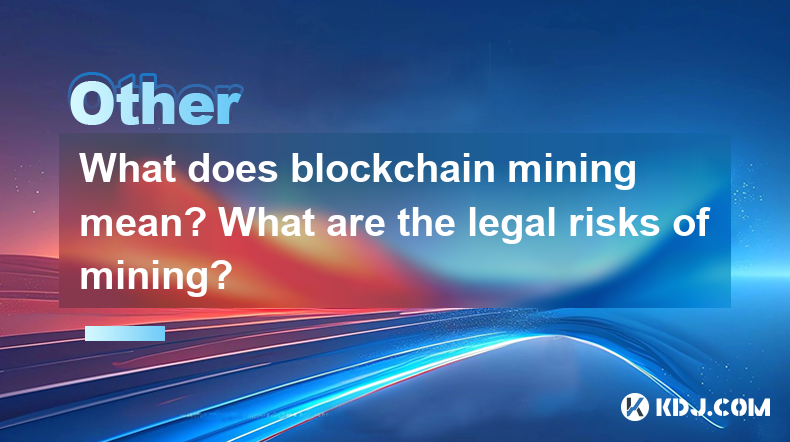
What does blockchain mining mean? What are the legal risks of mining?
Mar 31,2025 at 05:07pm
Blockchain mining is the process by which transactions are verified and added to the public ledger, known as the blockchain. Miners use powerful computers to solve complex mathematical problems, which, once solved, allow them to add a block of transactions to the blockchain. In return, miners are rewarded with cryptocurrency, typically Bitcoin. This pro...
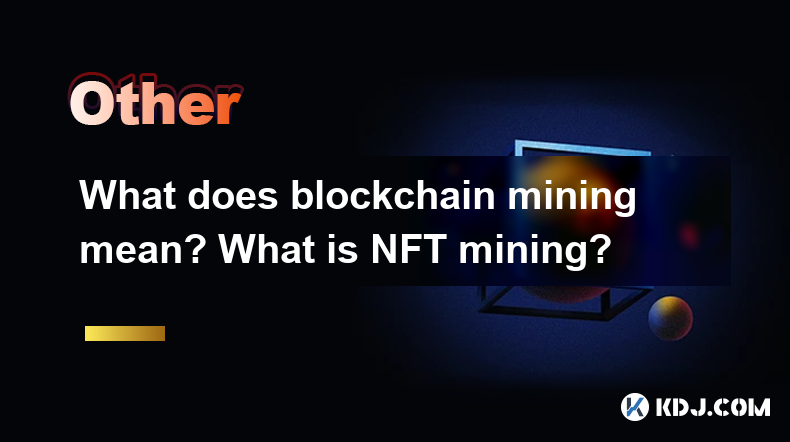
What does blockchain mining mean? What is NFT mining?
Mar 31,2025 at 04:07pm
Blockchain mining is a crucial process in the world of cryptocurrencies, particularly for networks like Bitcoin and Ethereum. It involves verifying transactions and adding them to the blockchain, a decentralized ledger. Miners use powerful computers to solve complex mathematical problems, which, when solved, allow them to add a block of transactions to ...
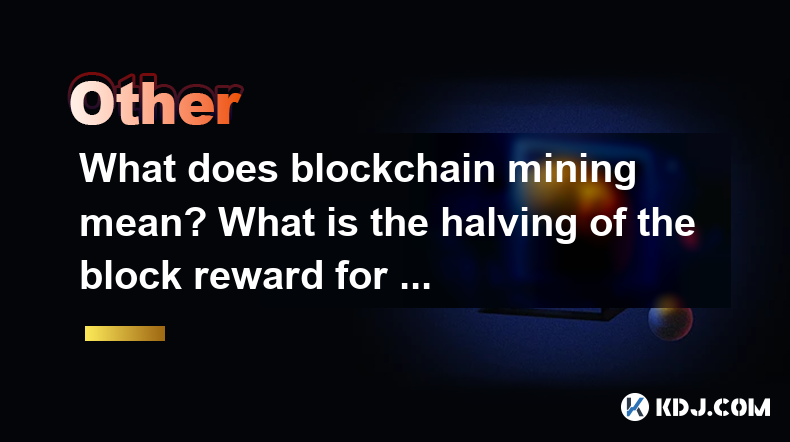
What does blockchain mining mean? What is the halving of the block reward for mining?
Mar 31,2025 at 03:43pm
Blockchain mining is a crucial process in the world of cryptocurrencies, particularly for networks like Bitcoin. It involves solving complex mathematical problems to validate transactions and add them to the blockchain, a public ledger of all cryptocurrency transactions. Miners use powerful computers to compete in solving these problems, and the first t...
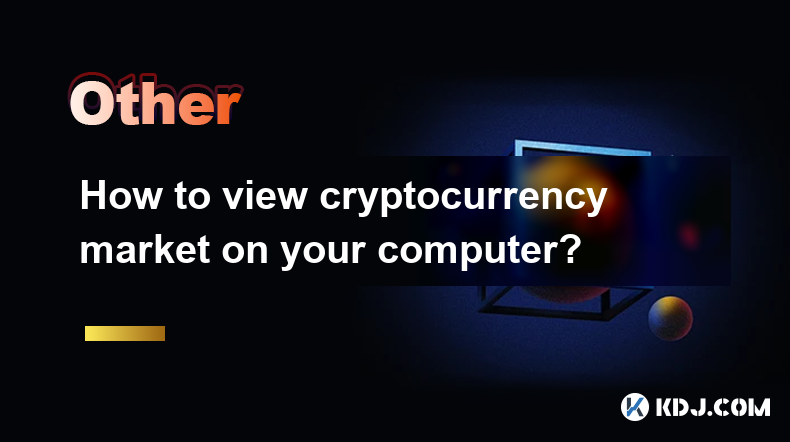
How to view cryptocurrency quotes on your computer?
Mar 31,2025 at 02:10pm
The best cryptocurrency market viewing tools and methodsMany software and websites can help you track cryptocurrencies. Which tool to choose depends on your needs and technical level. From simple price tracking to advanced chart analysis, there are many options. Here are some popular options: Web application: Many exchanges offer free web-side market vi...

The relationship between block browsers and decentralized applications
Mar 30,2025 at 07:35pm
Understanding the InterplayBlock browsers and decentralized applications (dApps) share a symbiotic relationship within the cryptocurrency ecosystem. Block browsers act as crucial tools for interacting with and monitoring the blockchain, while dApps leverage this underlying blockchain infrastructure to provide their functionality. This interplay is esse...
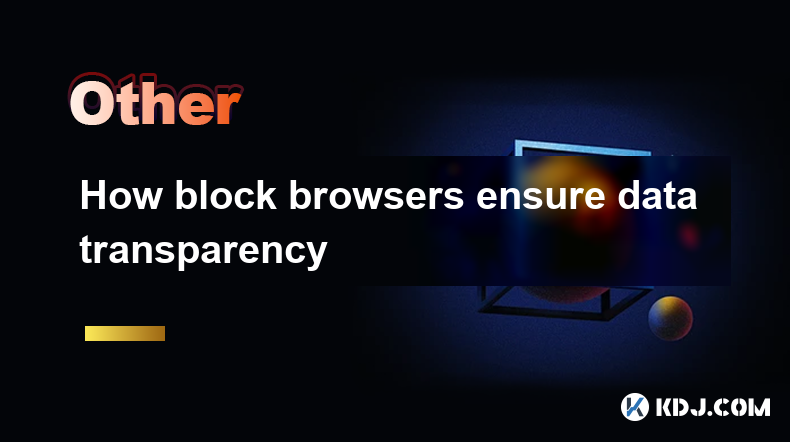
How block browsers ensure data transparency
Mar 30,2025 at 06:49am
Block browsers are designed to provide a transparent view into the inner workings of blockchain networks. Unlike traditional browsers that primarily access centralized servers, block browsers interact directly with the decentralized ledger, offering users a window into the immutable record of transactions. This transparency is a cornerstone of blockcha...

What does blockchain mining mean? What are the legal risks of mining?
Mar 31,2025 at 05:07pm
Blockchain mining is the process by which transactions are verified and added to the public ledger, known as the blockchain. Miners use powerful computers to solve complex mathematical problems, which, once solved, allow them to add a block of transactions to the blockchain. In return, miners are rewarded with cryptocurrency, typically Bitcoin. This pro...

What does blockchain mining mean? What is NFT mining?
Mar 31,2025 at 04:07pm
Blockchain mining is a crucial process in the world of cryptocurrencies, particularly for networks like Bitcoin and Ethereum. It involves verifying transactions and adding them to the blockchain, a decentralized ledger. Miners use powerful computers to solve complex mathematical problems, which, when solved, allow them to add a block of transactions to ...

What does blockchain mining mean? What is the halving of the block reward for mining?
Mar 31,2025 at 03:43pm
Blockchain mining is a crucial process in the world of cryptocurrencies, particularly for networks like Bitcoin. It involves solving complex mathematical problems to validate transactions and add them to the blockchain, a public ledger of all cryptocurrency transactions. Miners use powerful computers to compete in solving these problems, and the first t...

How to view cryptocurrency quotes on your computer?
Mar 31,2025 at 02:10pm
The best cryptocurrency market viewing tools and methodsMany software and websites can help you track cryptocurrencies. Which tool to choose depends on your needs and technical level. From simple price tracking to advanced chart analysis, there are many options. Here are some popular options: Web application: Many exchanges offer free web-side market vi...

The relationship between block browsers and decentralized applications
Mar 30,2025 at 07:35pm
Understanding the InterplayBlock browsers and decentralized applications (dApps) share a symbiotic relationship within the cryptocurrency ecosystem. Block browsers act as crucial tools for interacting with and monitoring the blockchain, while dApps leverage this underlying blockchain infrastructure to provide their functionality. This interplay is esse...

How block browsers ensure data transparency
Mar 30,2025 at 06:49am
Block browsers are designed to provide a transparent view into the inner workings of blockchain networks. Unlike traditional browsers that primarily access centralized servers, block browsers interact directly with the decentralized ledger, offering users a window into the immutable record of transactions. This transparency is a cornerstone of blockcha...
See all articles
















































































